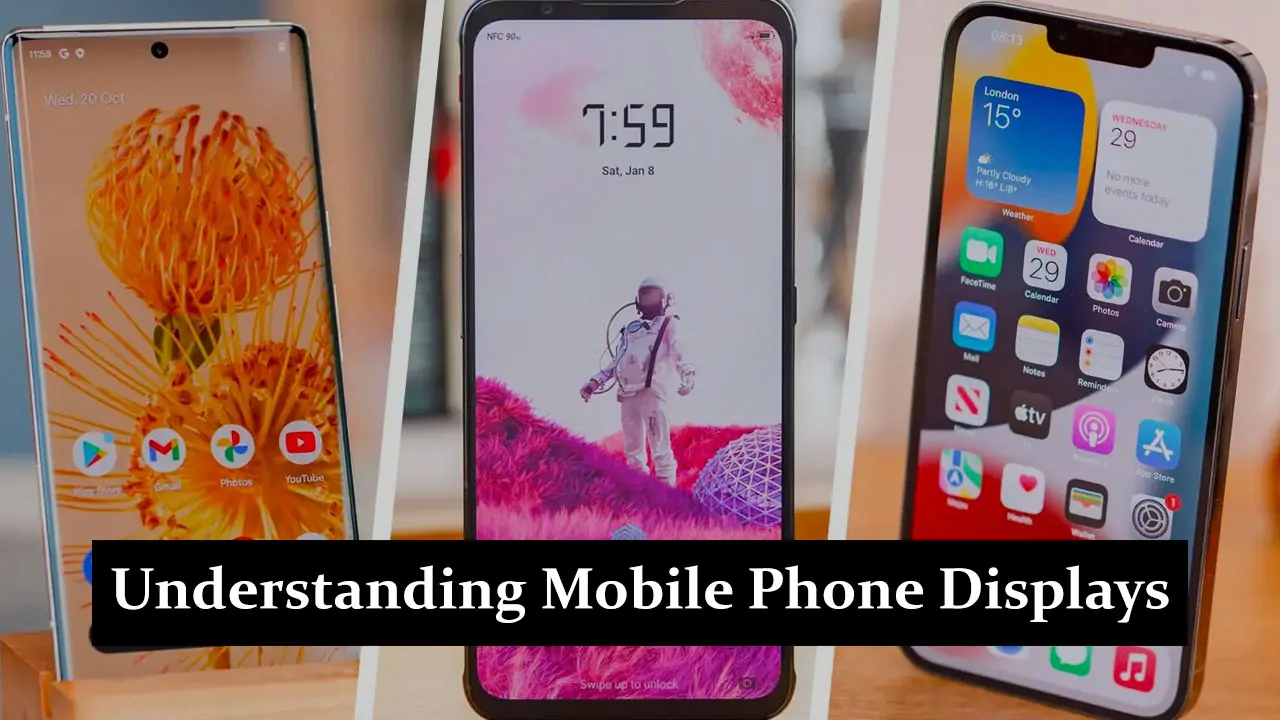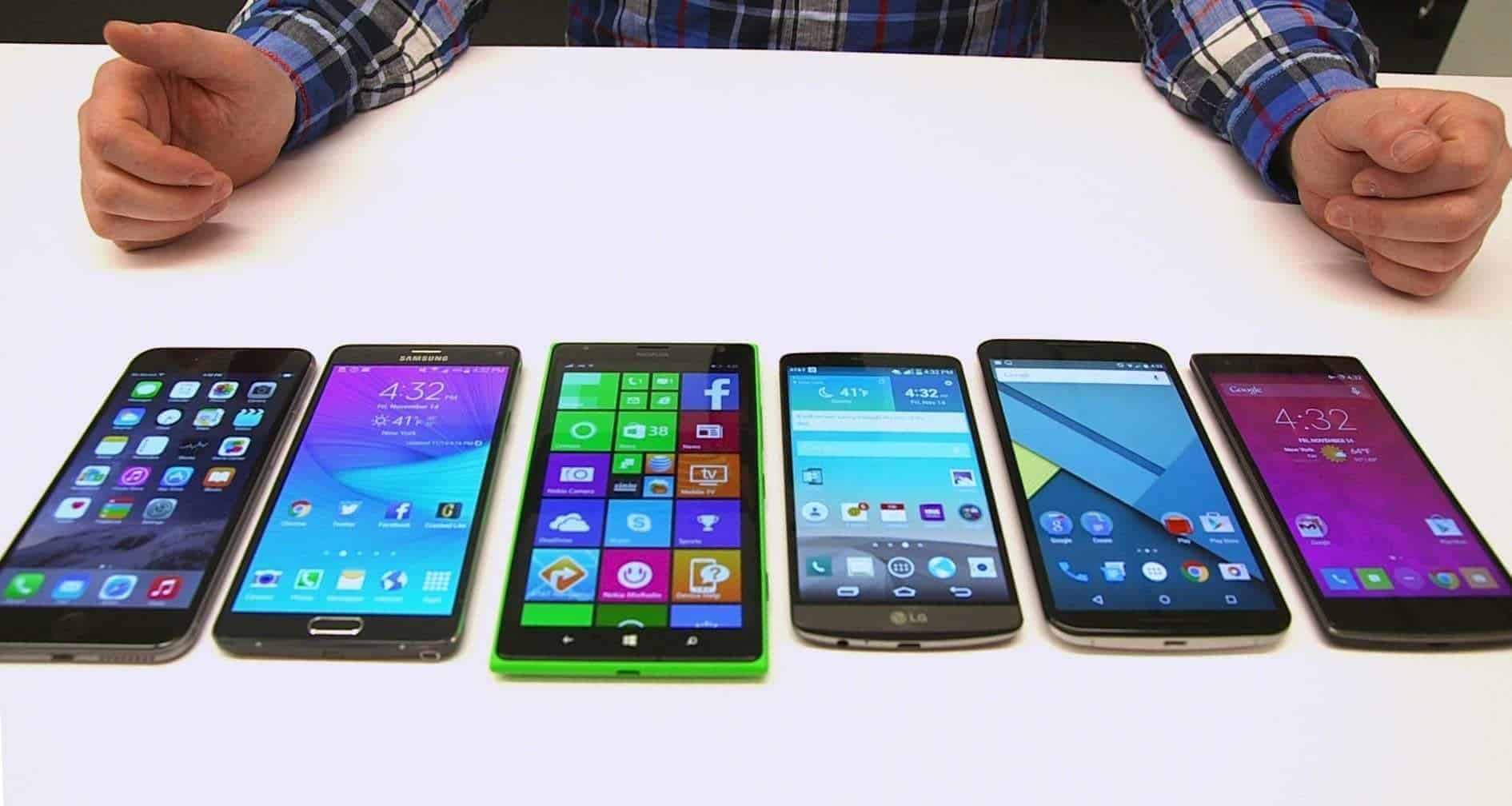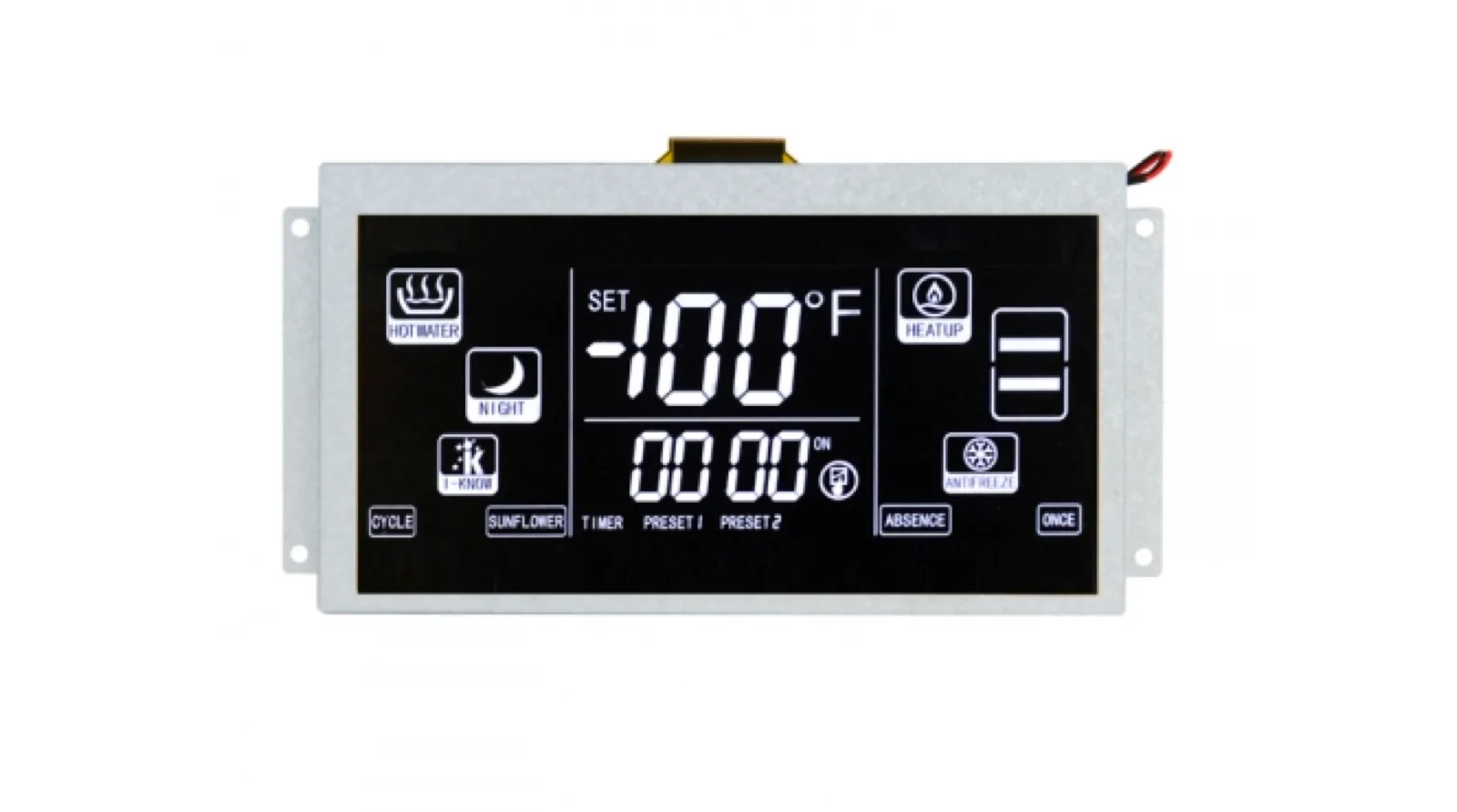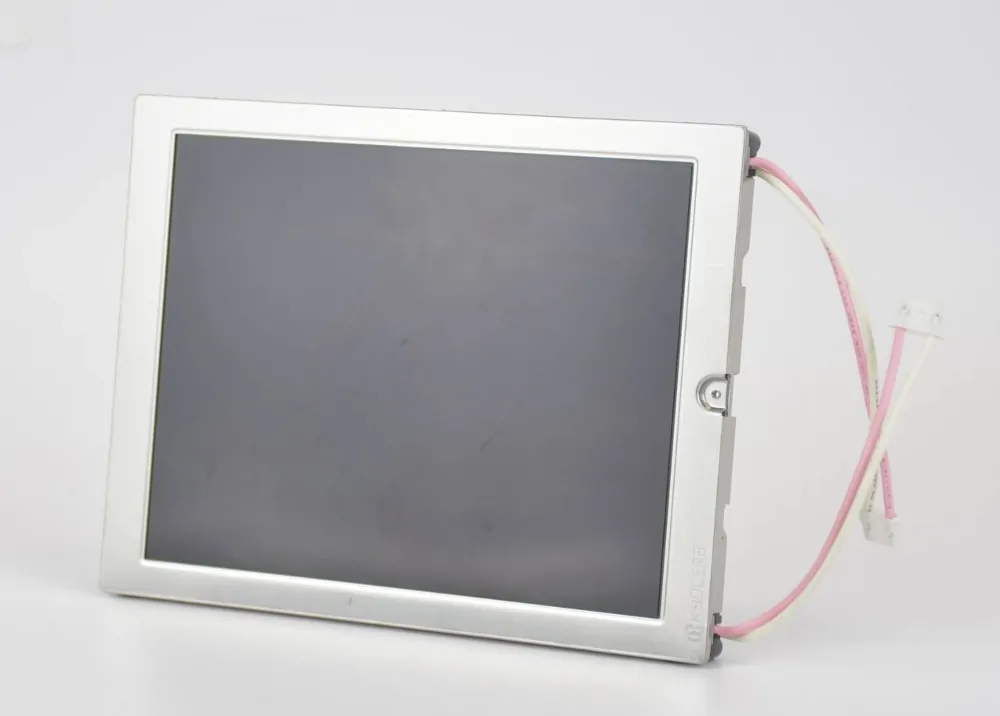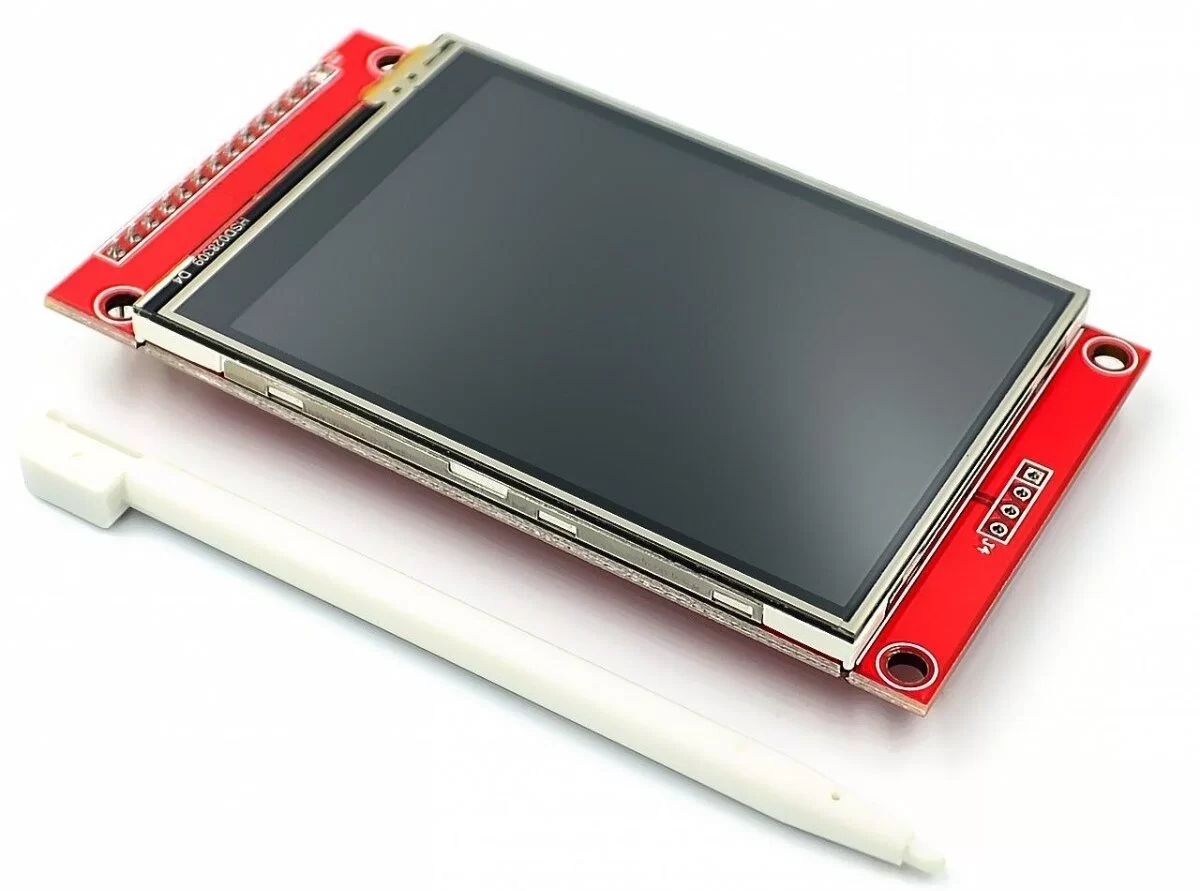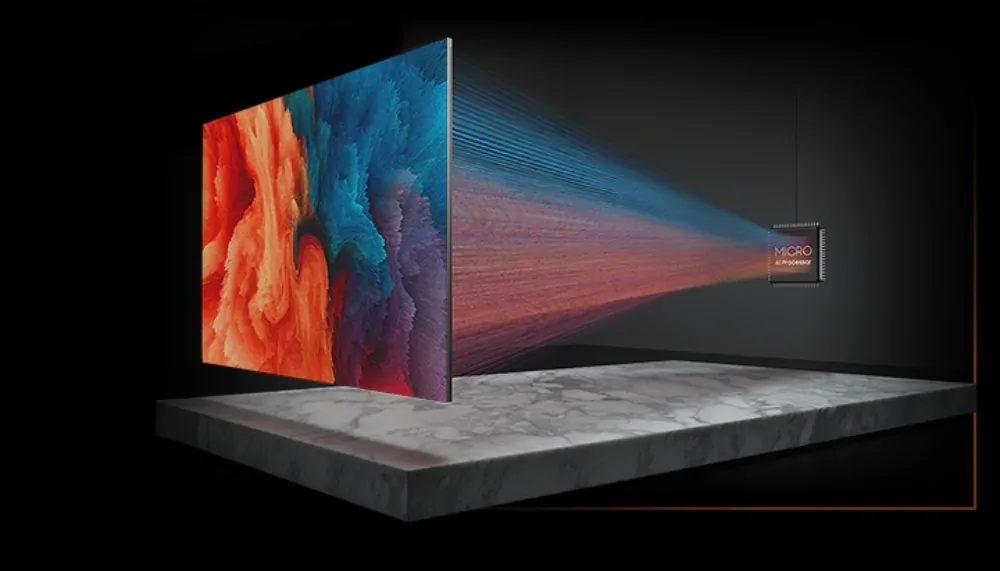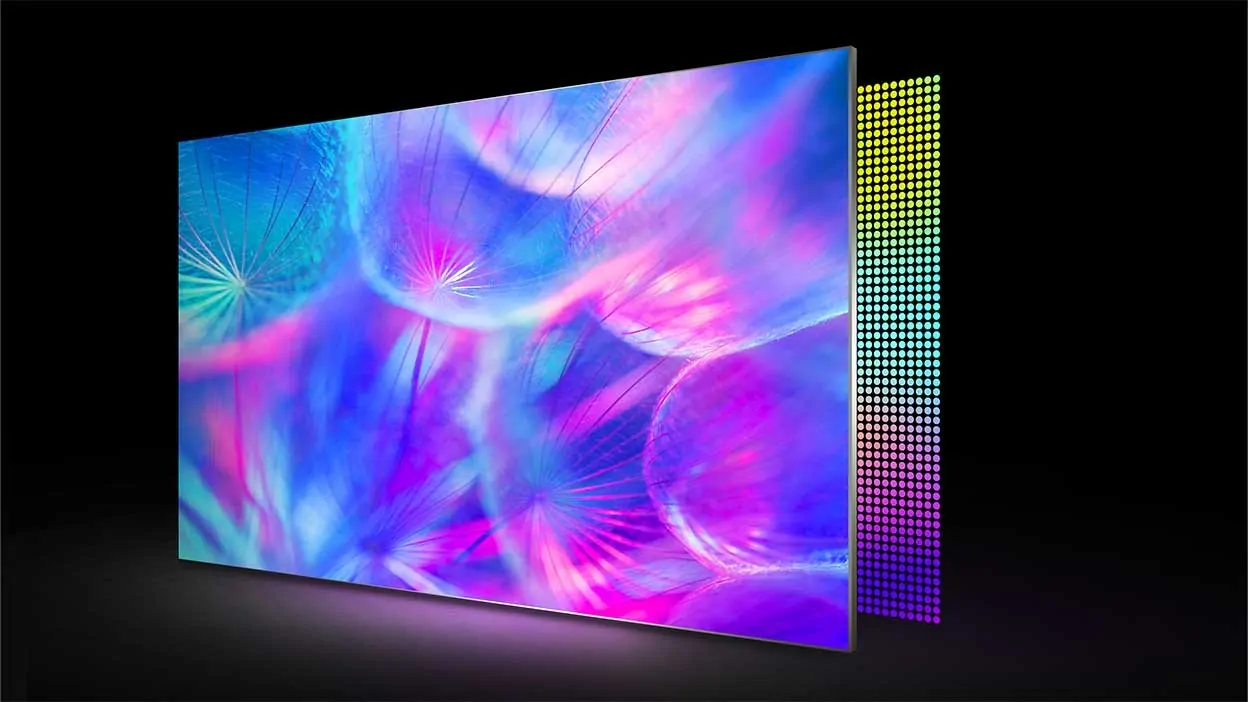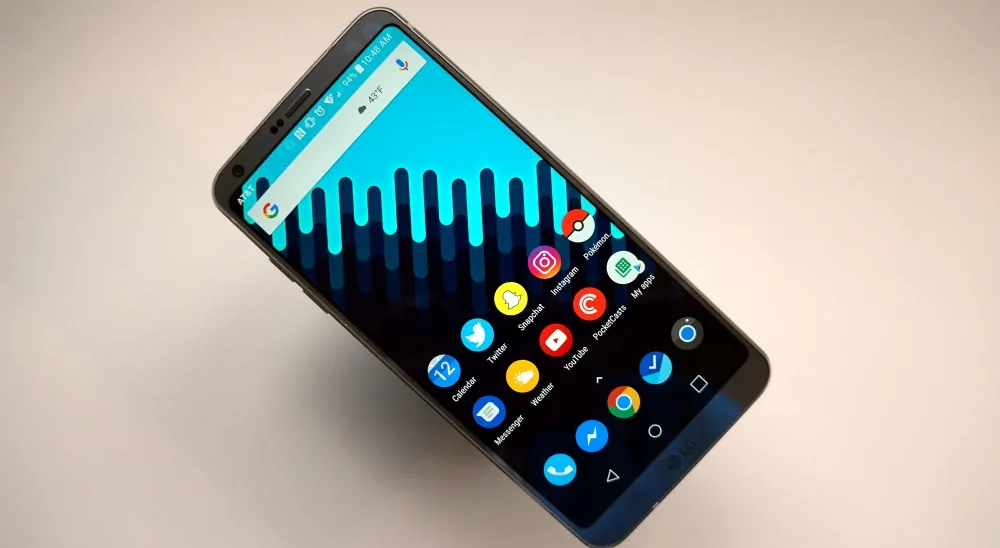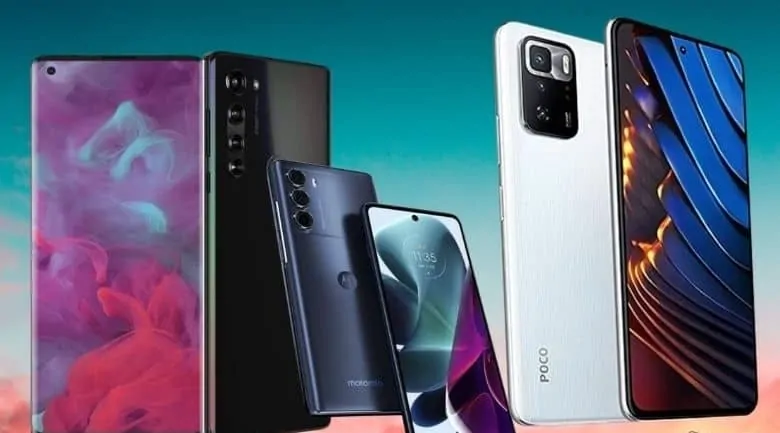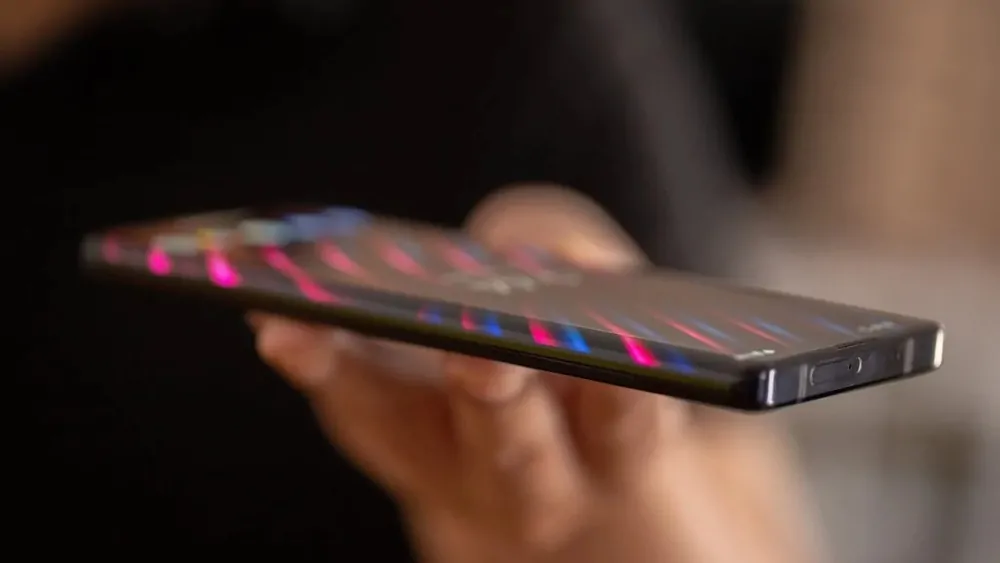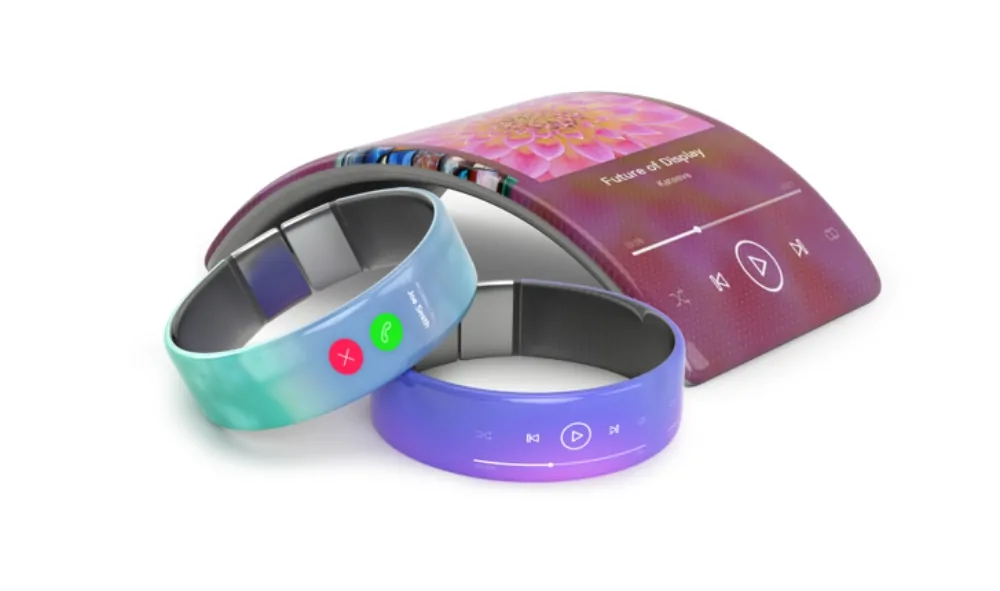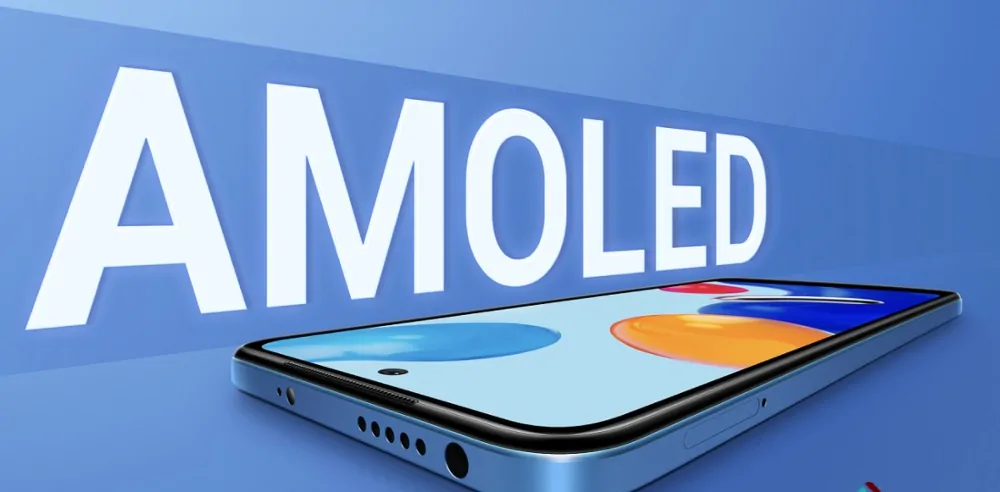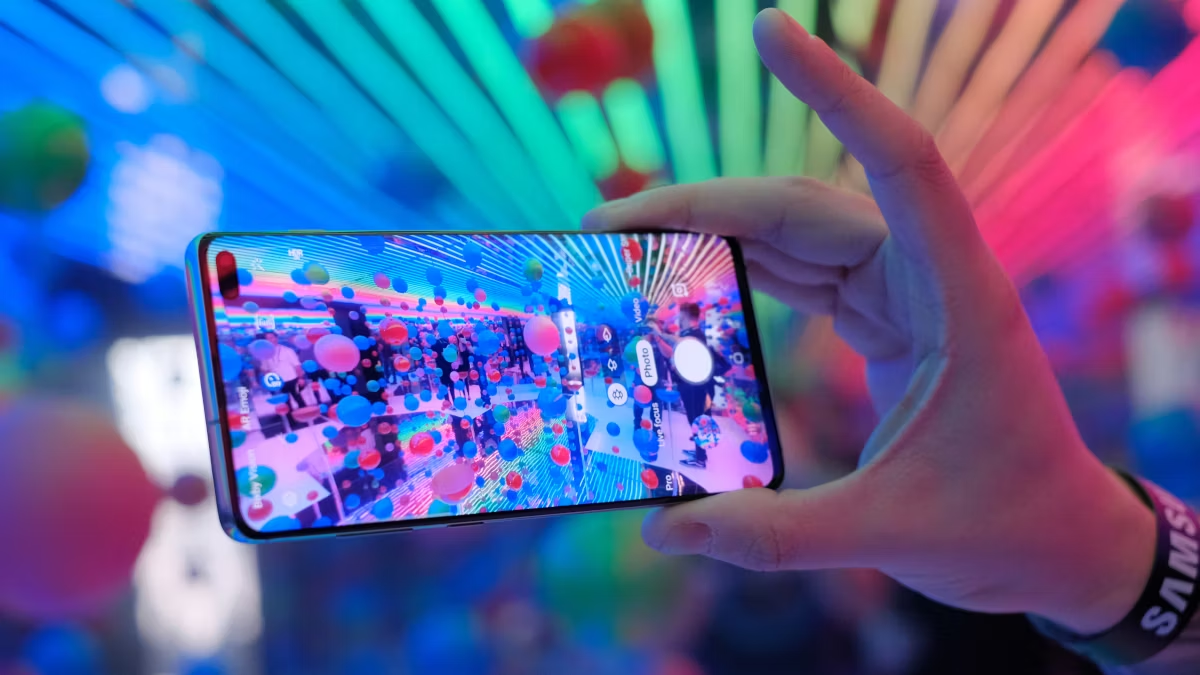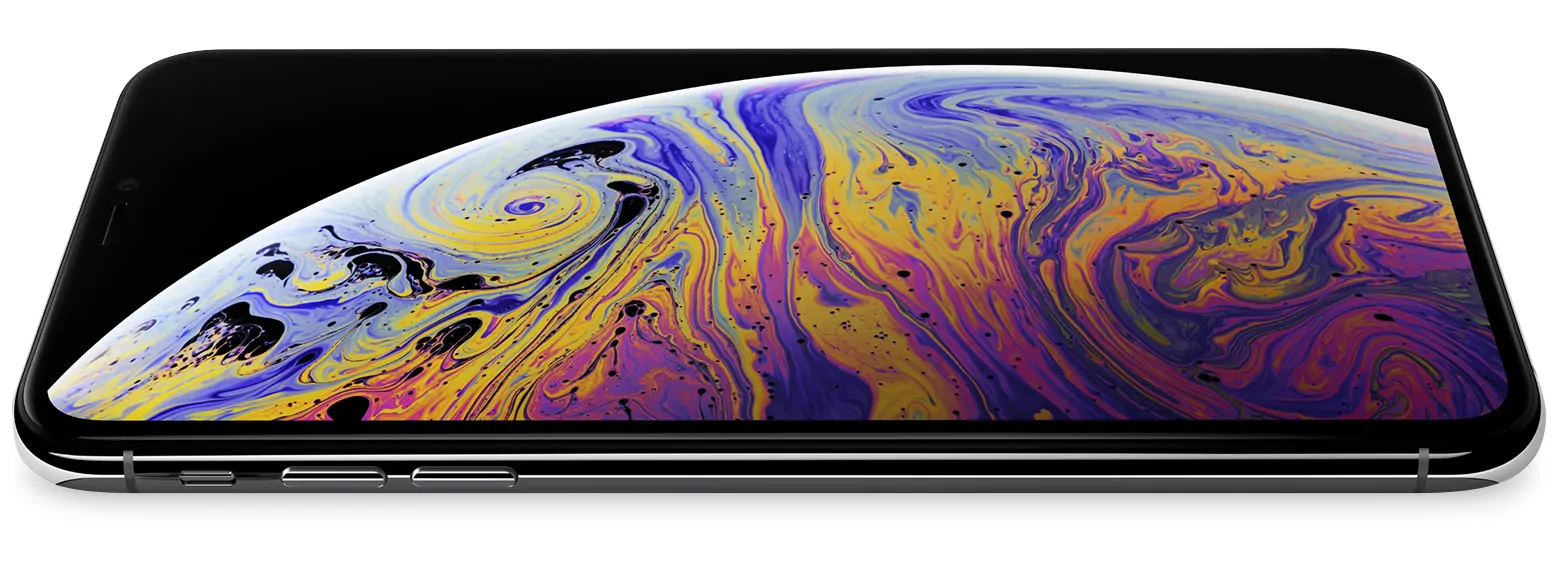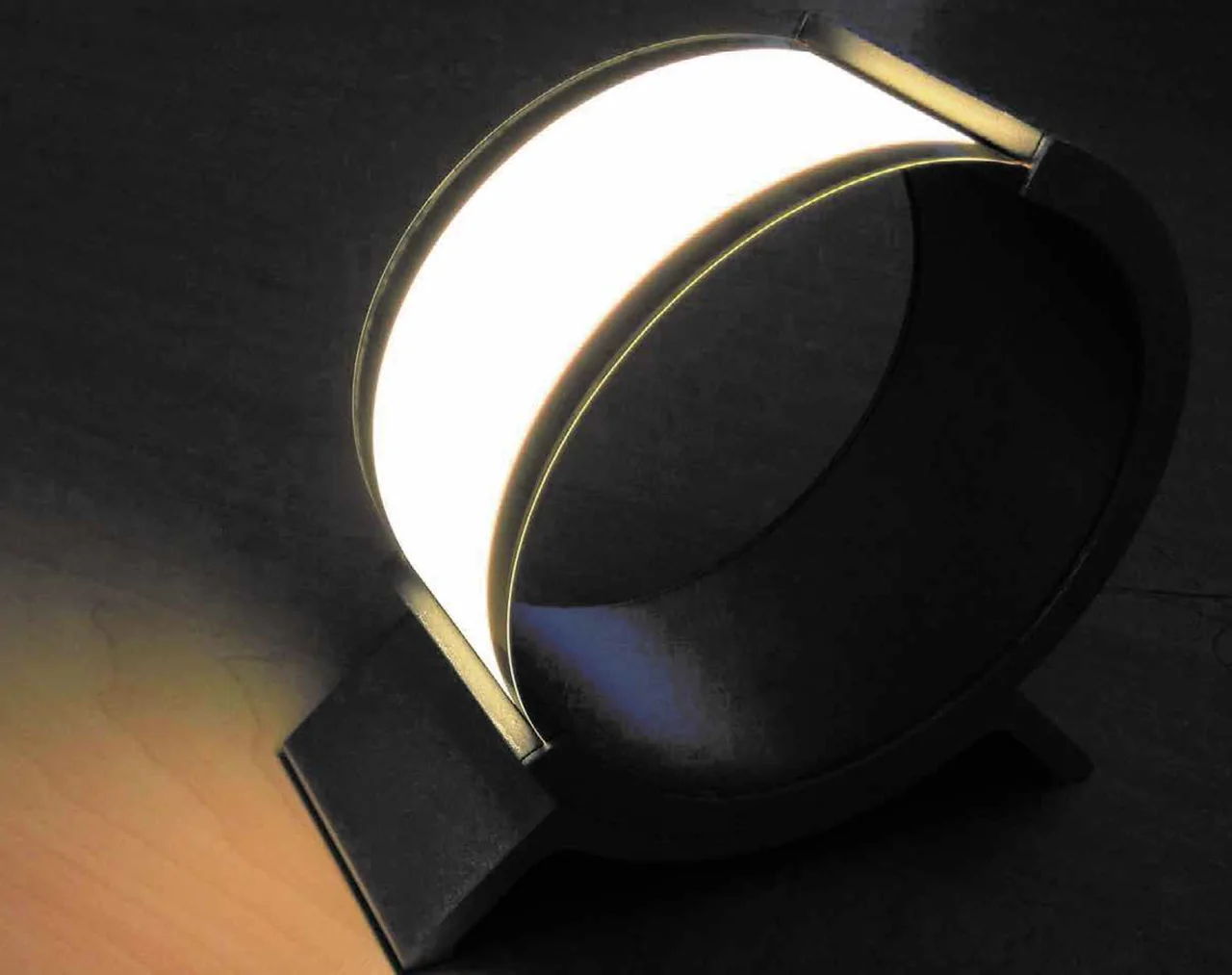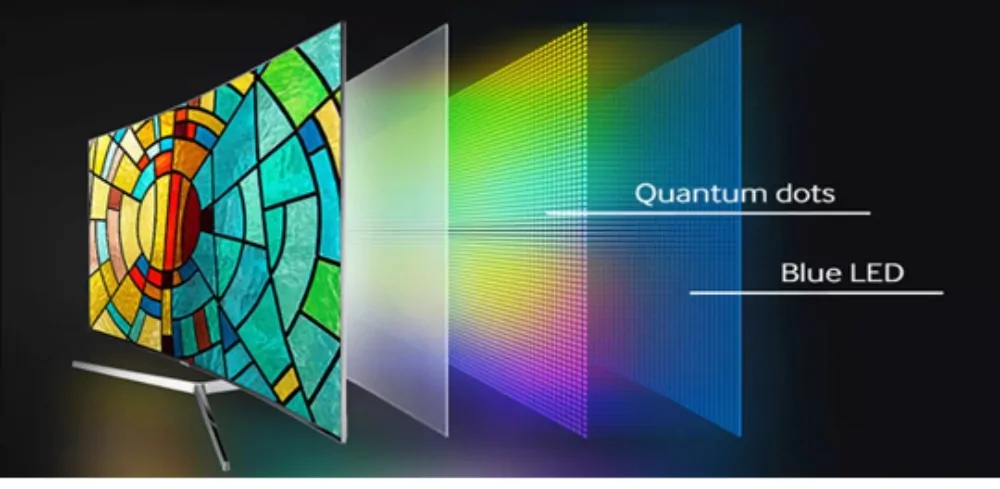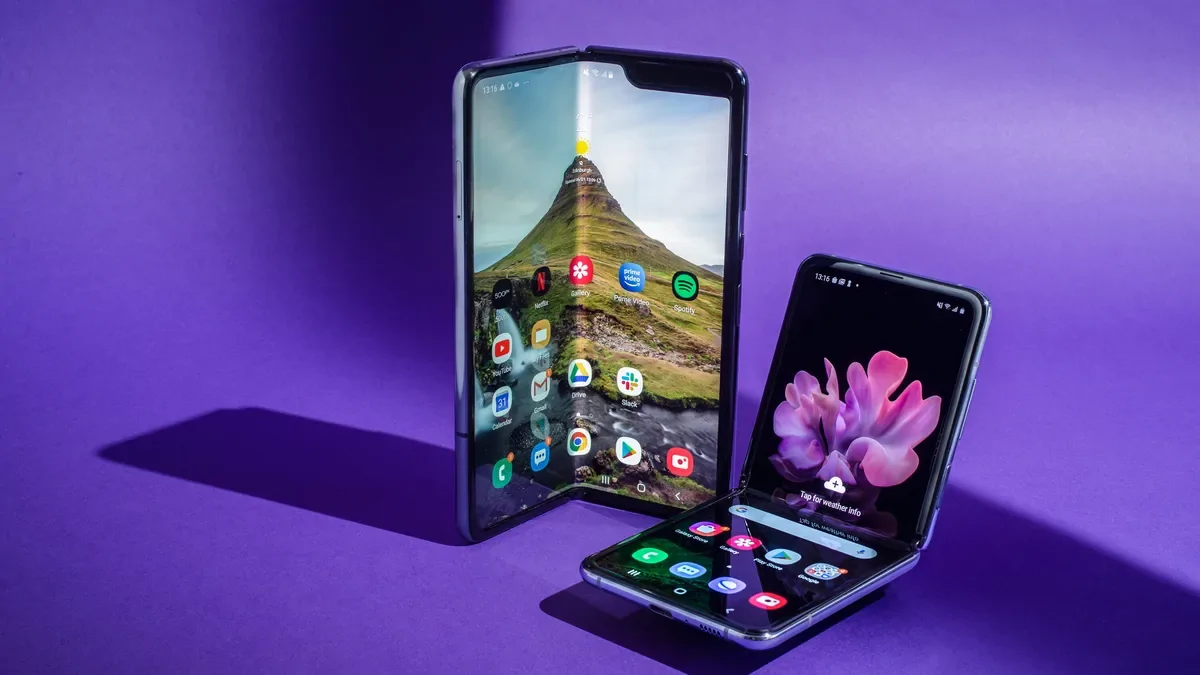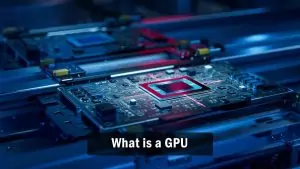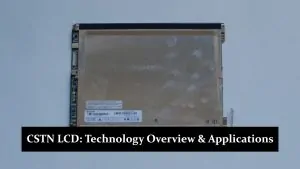Display technology is one of the most critical aspects of a smartphone. The display is the main interface between the user and the device, affecting everything from viewing media to typing and gaming. Over the years, mobile display technologies have seen significant advancements, evolving from basic LCD screens to cutting-edge OLED and foldable displays. These improvements have enhanced the quality of the user experience by offering better clarity, colour accuracy, and responsiveness. Choosing the right display is crucial, as it directly influences a smartphone’s overall enjoyment and functionality.
Understanding Mobile Phone Displays
A mobile phone display is the primary output interface that allows users to interact with their devices. It’s the screen where everything is visualised, from apps to videos, making it one of the most essential components of a smartphone. Mobile displays consist of millions of pixels that come together to form the visuals we see, and the quality of a display depends on various technical factors.
Key Characteristics of Mobile Displays:
- Resolution: Refers to the number of pixels on the display. Higher resolution (e.g., 1080p, 4K) means sharper images and clearer text.
- Brightness: Measured in nits, this determines how visible the screen is under different lighting conditions, especially outdoors.
- Refresh Rate: Measured in Hertz (Hz), it indicates how many times the display updates per second. Higher refresh rates (60Hz, 90Hz, 120Hz) provide smoother visuals, especially during scrolling and gaming.
- Colour Accuracy: Refers to how accurately the display reproduces colours. This is important for media consumption, photography, and video editing.
- Contrast Ratio: The difference between the brightest whites and the darkest blacks a display can show affects image depth and detail.
- Viewing Angles: Determines how well the display retains colour and clarity when viewed from different angles.
Types of Mobile/Smartphone Display Technologies
Monochrome LCD
Monochrome LCDs were one of the earliest display technologies used in mobile phones. These displays showed text and basic graphics in a single colour (usually black) on a light or dark background. Due to their simplicity and low power consumption, they were prominent in early mobile phones, such as Nokia’s iconic models.
Features of Monochrome LCD:
- Limited Color Palette: Displays only black and white or grayscale, without any colour capability.
- Low Power Consumption: Monochrome displays consume very little energy, making them efficient for mobile phones with limited battery life.
- Simple Graphics: Able to display text and very basic icons or graphics.
- Good Visibility in Direct Sunlight: Monochrome LCDs offer good visibility outdoors, making them practical for early smartphones.
- Low Resolution: These screens typically had low pixel density, sufficient for text but not for detailed images.
- Cost-Effective: Monochrome LCDs were inexpensive, making them ideal for early, cost-conscious cell phones.
STN (Super Twisted Nematic) LCD
STN LCD is an early liquid crystal display technology that improved over standard TN (Twisted Nematic) LCDs. The “super twisted” design allowed for a wider range of viewing angles and better contrast than basic TN screens, making it a popular choice for early mobile phones and portable devices. STN LCDs use a twisted nematic effect to control light passage, creating more advanced and clearer visuals than the earlier monochrome displays.
Features of STN LCD:
- Wider Viewing Angles: Compared to the original TN displays, STN LCDs provided better viewing angles, making seeing the screen from different positions easier.
- Improved Contrast: STN LCDs offered better contrast than basic TN displays, which enhanced text readability and overall display quality.
- Low Power Consumption: Like earlier LCDs, STN displays consumed relatively low energy, making them suitable for battery-powered devices.
- Slow Response Time: One major drawback of STN displays was their slow response time, which resulted in noticeable lag when refreshing the display, especially in fast-moving applications or scrolling text.
- Colour Display Capabilities: STN technology eventually led to the development of colour STN (CSTN) displays, allowing for more vibrant colour displays. However, they were still less sharp than modern technologies like TFT and OLED.
- Cost-Effective: STN LCDs were less expensive to produce than more advanced display technologies like TFT, making them a budget-friendly option for early mobile phones and other devices.
CSTN (Color Super Twisted Nematic) LCD
CSTN (Color Super Twisted Nematic) LCD is a color version of STN (Super Twisted Nematic) display technology. CSTN technology was an important step forward in mobile and portable device displays, offering colour capabilities while maintaining the cost-effectiveness of the original STN technology.
CSTN technology allowed manufacturers to produce colour screens for mobile phones, personal digital assistants (PDAs), and other devices at a lower price than other colour display technologies, such as TFT (Thin Film Transistor).
Features of CSTN LCD:
- Colour Display: CSTN brought colour to mobile displays, enabling a richer visual experience with more vibrant content than monochrome and grayscale displays.
- Cost-Effective: One of the main advantages of CSTN displays was their lower manufacturing cost compared to more advanced colour display technologies like TFT.
- Energy-Efficient: CSTN displays consumed relatively low power, making them suitable for mobile phones where battery life was a key consideration.
- Slower Response Time: CSTN displays had slower response times than TFT, resulting in lag and ghosting effects, particularly in fast-moving content or applications with animations.
- Limited Viewing Angles: While CSTN improved colour capabilities, it still had relatively narrow viewing angles, which meant the display could look washed out or less visible from the side.
- Lower Resolution: CSTN displays generally had lower pixel densities than more advanced displays, meaning that while they could show colour, they could have been sharper and more detailed.
TFT (Thin Film Transistor) LCD
TFT LCD is an advanced type of LCD that uses thin-film transistors to improve image quality and response times. Each pixel in a TFT display has its transistor, which allows for faster control of each pixel, resulting in sharper images, better contrast, and quicker response times.
Features of TFT LCD:
- Sharp Image Quality: TFT displays provide sharper images and higher resolution than older technologies like STN and CSTN. This is due to the individual transistors controlling each pixel, allowing for more precise control over the display.
- Faster Response Time: TFT LCDs have faster response times, reducing motion blur and lag, which makes them suitable for displaying video and fast-moving content.
- Better Contrast: The contrast ratio in TFT displays is significantly better than in earlier LCD technologies, which results in clearer differentiation between light and dark areas on the screen.
- High Brightness: TFT screens can achieve higher brightness levels, making them more readable in various lighting conditions, including outdoor use.
- Narrow Viewing Angles: One drawback of early TFT displays was their limited viewing angles. When viewed from the side, the colours and brightness could distort, though later advancements have improved this.
- Increased Power Consumption: While TFT displays offer better performance in terms of image quality and response time, they tend to consume more power than simpler LCD technologies, which can affect cell phone battery life.
- Wide Usage: Due to their performance and cost balance, TFT LCDs are widely used in various devices, including smartphones, tablets, computer monitors, and portable gaming consoles.
Micro LED
MicroLED is an emerging display technology that uses microscopic light-emitting diodes (LEDs) to create individual pixels. Each pixel in a MicroLED display comprises tiny, self-illuminating LEDs, similar to OLED technology, but with several advantages in brightness, lifespan, and energy efficiency. MicroLED eliminates the need for a backlight, as each pixel emits its light, offering higher brightness levels and greater durability than traditional LED and OLED displays.
Features of MicroLED:
- Self-Emissive Pixels: Like OLED, MicroLED displays feature self-emissive pixels, meaning each pixel generates its light. This allows for true blacks and incredibly high contrast ratios, as individual pixels can be turned on or off independently.
- Higher Brightness: MicroLED displays can achieve much higher brightness levels than OLED, making them ideal for use in brightly lit environments. This is especially beneficial for outdoor displays or settings where brightness is key.
- Better Energy Efficiency: Since MicroLED displays can selectively turn off pixels when displaying black, they are more energy-efficient than traditional LED displays. Additionally, they offer higher brightness with less power consumption than OLED displays.
- No Burn-In: Unlike OLED, MicroLED technology is not prone to burn-in, where static images can leave permanent marks on the screen. This makes MicroLED more suitable for long-term use without the risk of image retention.
- Longer Lifespan: MicroLED displays have a longer lifespan than OLED displays because they use inorganic materials (typically gallium nitride) that are less prone to degradation. This leads to better performance and durability over time.
Mini-LED
Mini-LED is a display technology that uses thousands of smaller light-emitting diodes (LEDs) as a backlight to improve brightness, contrast, and overall display performance compared to traditional LED displays. These “mini” LEDs are significantly smaller than the standard LEDs used in typical LED-backlit LCDs, allowing for more precise control of local dimming zones and better contrast. Mini-LED technology bridges the gap between traditional LED and more advanced display technologies like OLED, offering many of the same benefits but with fewer drawbacks associated with OLED.
Features of Mini-LED:
- Smaller LEDs: Mini-LED technology uses significantly smaller LEDs than those found in traditional LED-backlit displays. This allows for more precise control of individual lighting zones, resulting in better contrast and more detailed control of light and dark areas.
- Improved Local Dimming: With thousands of tiny LEDs, mini-LED displays can have hundreds or even thousands of local dimming zones. This means that specific parts of the screen can be dimmed or brightened independently, enhancing the overall contrast ratio and delivering deeper blacks.
- Brighter Displays: Mini-LED displays offer higher brightness levels than standard LED-backlit displays. This makes them ideal for HDR (High Dynamic Range) content and use in brightly lit environments.
- Better Contrast: Mini-LED technology delivers improved contrast by providing more control over individual lighting zones, offering better differentiation between light and dark areas on the screen.
- Energy Efficiency: Despite the increased number of LEDs, Mini-LED displays can be more energy-efficient because they can dynamically control which LEDs are lit, reducing power consumption when displaying darker content.
LCD (Liquid Crystal Display)
LCD (Liquid Crystal Display) is a flat-panel display technology that uses liquid crystals combined with a backlight to display images. Liquid crystals do not emit light directly but use a light-modulating property to produce images on the screen. This technology is used in various devices, from smartphones and TVs to computer monitors and digital watches.
Features of LCD:
- Backlight Dependency: LCD screens use a backlight (usually LED) to illuminate the display. The screen would not be visible without the backlight, as the liquid crystals do not produce light.
- Energy Efficiency: While LCDs consume more power than newer display technologies like OLED, they are still relatively energy-efficient, especially compared to older CRT displays.
- High Resolution: LCD technology offers high pixel density, making it capable of displaying detailed images and crisp text. This makes it ideal for smartphones, tablets, and computer monitors.
- Colour Accuracy: LCDs can display a wide range of colours, making them suitable for applications that require accurate colour representation, such as photo editing and graphic design.
- Stable Image Quality: Unlike older technologies, LCDs provide stable image quality with no flickering, resulting in a more comfortable viewing experience.
IPS LCD (In-Plane Switching LCD)
IPS LCD is a type of LCD technology designed to address the limitations of traditional TFT LCDs, particularly in terms of colour accuracy and viewing angles. IPS technology aligns liquid crystals horizontally between glass layers, allowing for better image quality when viewed from different angles. This innovation significantly improved the performance of LCDs, making IPS displays popular in smartphones, tablets, and monitors.
Features of IPS LCD:
- Wide Viewing Angles: One of the biggest advantages of IPS displays is their ability to maintain consistent colours and brightness across wide viewing angles, typically up to 178 degrees. This makes IPS ideal for devices where multiple users view the screen from different angles.
- Improved Color Accuracy: IPS panels offer more accurate and vibrant colours than standard TFT LCDs. This makes them well-suited for tasks that require high colour fidelity, such as photo editing and graphic design.
- Stable Response Time: While IPS displays may have slightly slower response times than TN panels, they offer more stable and consistent performance, particularly useful for everyday activities and professional use.
- Better Contrast: IPS panels generally provide better contrast than older LCD technologies, though they may not reach the levels of OLED displays. This enhances the clarity of images, especially in well-lit environments.
- Reduced Color Shifting: Traditional LCDs tend to shift colours when viewed from the side. IPS LCDs solve this problem by maintaining consistent colour performance across different angles.
LED (Light-Emitting Diode)
LED (Light-Emitting Diode) is a display technology that uses small diodes that emit light when an electric current passes through them. In smartphones, LED technology is primarily used for backlighting LCDs, improving brightness and energy efficiency. However, in modern contexts, “LED display” often refers to full-array LED displays, where each pixel is an individual light-emitting diode.
Features of LED Displays:
- Improved Brightness: LED displays are known for their high brightness levels, which make them easier to view in outdoor or brightly lit environments.
- Energy Efficiency: LEDs consume less power than older backlighting technologies like CCFL, helping extend mobile phone battery life.
- Better Contrast: LED backlighting can be controlled more precisely, offering better contrast between dark and light areas on the screen improving the overall display quality.
- Slim Design: LED backlights are much thinner than CCFL backlights, enabling slimmer and lighter devices such as modern smartphones, laptops, and TVs.
- Longer Lifespan: LEDs are more durable and have a longer lifespan than older backlighting technologies, reducing the likelihood of display degradation over time.
OLED (Organic Light-Emitting Diode)
OLED (Organic Light-Emitting Diode) is a display technology that uses organic compounds that emit light when an electric current passes through them. Unlike LCDs, which require a backlight, each pixel in an OLED display is self-illuminating, meaning that it can turn on and off individually. This leads to deeper blacks, better contrast, and more energy efficiency when displaying darker content.
Features of OLED:
- Self-Illuminating Pixels: Unlike LCDs, which require a backlight, each pixel in an OLED display emits its light. This allows for true blacks, as individual pixels can be turned off completely.
- Superior Contrast Ratio: OLED displays offer a much higher contrast ratio than LCDs because they can produce true black levels. This enhances image quality, especially in dark scenes.
- Better Color Accuracy: OLED technology provides vibrant and accurate colours, offering a more lifelike viewing experience.
- Energy Efficiency: OLED displays are more energy-efficient when displaying darker content, as individual pixels can turn off. This extends battery life in cell phones.
- Faster Response Times: OLEDs have much faster response times than LCDs, resulting in smoother motion and reduced blur, which is especially beneficial for gaming and video playback.
AMOLED (Active-Matrix Organic Light-Emitting Diode)
AMOLED (Active-Matrix Organic Light-Emitting Diode) is a display technology that combines the benefits of OLED with an active matrix system that controls individual pixels more efficiently. Like OLED, AMOLED uses organic compounds that emit light when electrically charged. However, the “active matrix” component allows for faster pixel switching and higher refresh rates, making it ideal for smartphones, tablets, and high-performance displays.
Features of AMOLED:
- Self-Illuminating Pixels: Like OLED, each pixel in an AMOLED display emits light, allowing for true blacks and excellent contrast. Individual pixels can be turned off completely, improving energy efficiency when displaying dark images.
- Active Matrix Structure: The active matrix in AMOLED allows for faster switching of individual pixels compared to the passive matrix used in some older displays. This results in smoother performance, especially for video playback and gaming.
- High Contrast and Deep Blacks: AMOLED displays offer a higher contrast ratio than traditional LCDs, with true blacks, since pixels can be completely turned off.
- Vivid Colours: AMOLED screens are known for producing vibrant and saturated colours, making them visually appealing for media consumption and gaming.
- Fast Response Time: AMOLED has a much faster response time than LCD technologies, resulting in less motion blur and better performance in fast-moving content.
- Thinner and Lighter: AMOLED displays are thinner and lighter than their LCD counterparts because they don’t require a backlight, contributing to the development of ultra-thin and lightweight devices.
Super AMOLED (Super Active-Matrix Organic Light-Emitting Diode)
Super AMOLED is an advanced version of AMOLED display technology developed primarily by Samsung. It integrates the touch sensor directly into the display rather than layering it on top, as seen in traditional AMOLED screens. This results in thinner displays, reduced reflection, and improved responsiveness. Super AMOLED offers all the benefits of AMOLED technology, such as deep blacks and vibrant colours, with additional enhancements for visibility, performance, and user experience.
Features of Super AMOLED:
- Integrated Touch Layer: Unlike standard AMOLED displays, which have a separate layer for touch sensitivity, Super AMOLED directly integrates the touch sensor into the screen. This reduces thickness and improves touch response.
- Better Outdoor Visibility: Super AMOLED displays are optimised for better performance in direct sunlight, offering improved brightness and reduced glare or reflection compared to regular AMOLED displays.
- Vivid and Bright Colours: Like AMOLED, Super AMOLED delivers vibrant and saturated colours with deep blacks and a high contrast ratio, making media content look more visually stunning.
- Energy Efficiency: Super AMOLED displays are even more power-efficient than regular AMOLED screens, particularly when displaying dark content. This is due to the ability to turn off individual pixels when displaying black, conserving battery life.
- Faster Response Time: Super AMOLED provides even faster response times than AMOLED, making it ideal for video playback, gaming, and other high-speed applications.
Retina Display (IPS LCD)
Retina Display is a marketing term created by Apple to refer to its high-resolution IPS LCD screens. The key feature of a Retina display is its high pixel density, which makes individual pixels indistinguishable from the human eye at a normal viewing distance. While the Retina Display is technically an IPS LCD, its resolution is significantly higher than traditional LCDs, providing crisp, clear visuals and accurate colours.
Features of Retina Display (IPS LCD):
- High Pixel Density: The defining feature of the Retina Display is its high pixel density. Typically, the display has more than 300 pixels per inch (PPI), the threshold where individual pixels cannot be distinguished by the human eye at a typical viewing distance.
- Crisp and Sharp Text/Images: With its high pixel density, the Retina Display offers extremely sharp text and images, providing a smoother and more detailed viewing experience.
- IPS Technology: Since Retina is based on IPS LCD technology, it benefits from IPS features such as wide viewing angles and accurate colour reproduction.
- Wide Viewing Angles: Like other IPS LCDs, Retina Displays maintain colour and contrast accuracy even when viewed from wide angles, making them ideal for collaborative or shared viewing experiences.
- True-to-Life Colours: Retina Displays are known for offering accurate and vibrant colour reproduction, making them suitable for applications requiring colour precision, such as photo editing or watching high-definition content.
Flexible OLED (Organic Light-Emitting Diode)
Flexible OLED is an advanced OLED (Organic Light-Emitting Diode) display technology that allows the screen to bend or flex without breaking. Unlike traditional rigid OLED displays, flexible OLEDs are built on a flexible plastic substrate rather than glass. This enables the creation of foldable, curved, or rollable screens, offering new possibilities in smartphone and device design.
Features of Flexible OLED:
- Bendable and Foldable Design: Flexible OLED displays can be bent, folded, or even rolled up without damaging the screen. This allows for innovative product designs, such as foldable smartphones, curved displays, and flexible wearables.
- Durability: Because flexible OLED displays use plastic substrates instead of glass, they are less likely to crack or shatter if dropped, making them more durable than traditional displays.
- True Blacks and High Contrast: Like all OLED technologies, flexible displays offer true blacks and high contrast ratios, allowing individual pixels to turn off completely.
- Thin and Lightweight: Flexible OLED displays are much thinner and lighter than their rigid counterparts, as they do not require the same protective materials. This makes devices slimmer and more portable.
- Vibrant Colors: Flexible OLED displays offer the same vibrant colour reproduction as standard OLED displays, with deep blacks, bright whites, and vivid colours.
QHD (Quad High Definition) Displays
QHD, or Quad High Definition, refers to a display resolution of 2560 x 1440 pixels, four times standard HD’s resolution (720p). Commonly referred to as 1440p, QHD is popular in high-end smartphones, tablets, monitors, and gaming devices due to its sharpness and clarity. It significantly improves over Full HD displays (1080p), offering a more immersive viewing experience with greater detail.
Features of QHD and 4K Displays:
- Higher Pixel Density: QHD and 4K displays offer much higher pixel densities than Full HD, resulting in sharper images and more detailed visuals. This is especially noticeable in larger screens where pixelation can occur with lower resolutions.
- Improved Clarity and Detail: The increased resolution of QHD and 4K provides more clarity and finer details, which enhances the viewing experience, especially for high-resolution videos, gaming, and media consumption.
- Ideal for Large Screens: QHD and 4K resolutions are ideal for larger displays, such as TVs, monitors, and high-end smartphones. 4K, in particular, excels at providing clear, sharp images even on very large screens.
- Better Gaming Experience: Gamers benefit from QHD and 4K resolutions due to the improved detail and clarity in graphics, leading to a more immersive experience. Many gaming monitors and consoles now support these higher resolutions.
- Enhanced Multitasking: The increased pixel count in QHD and 4K displays provides more screen real estate, allowing for easier multitasking and more content to be displayed simultaneously without compromising clarity.
QLED (Quantum Dot LED)
QLED (Quantum Dot Light-Emitting Diode) is a display technology that combines traditional LED backlighting with quantum dot particles to improve colour accuracy, brightness, and overall picture quality. Unlike OLED, where each pixel is self-illuminating, QLED uses quantum dots to enhance the performance of an LED backlight, producing brighter, more vibrant colours with better energy efficiency.
Features of QLED:
- Quantum Dots: The core feature of QLED displays is the use of quantum dots—tiny semiconductor nanocrystals that emit pure, accurate colours when exposed to light. These quantum dots are placed between the LED backlight and the display screen to improve colour reproduction.
- Improved Brightness: QLED displays are known for their high brightness levels. Quantum dots allow these displays to achieve superior brightness compared to traditional LED and OLED screens, making them ideal for viewing in well-lit rooms.
- Wide Color Gamut: QLED technology enables a broader range of colours and more precise colour accuracy than traditional LED displays. This results in more vivid, true-to-life colours that enhance the viewing experience, especially for high-definition content.
- Longer Lifespan: Since QLED displays rely on LED backlighting rather than organic compounds like OLED, they tend to have a longer lifespan, with less risk of burn-in or colour degradation over time.
- High Contrast Ratios (with Local Dimming): QLED displays that use full-array local dimming (FALD) offer higher contrast ratios by dynamically controlling the brightness of specific screen areas. This enhances image quality, especially in scenes with both bright and dark elements.
Foldable Displays
Foldable displays are flexible display technology that allows screens to be bent or folded without breaking or losing functionality. This is made possible using advanced materials such as flexible OLED or AMOLED, which can bend and fold due to their thin and pliable structure. Foldable displays offer new form factors for smartphones, tablets, and other devices, allowing larger screens in more compact form factors when folded.
Features of Foldable Displays:
- Flexible Screen: The most defining feature of foldable displays is their ability to bend or fold without cracking. These displays are typically made using flexible OLED (Organic Light-Emitting Diode) technology, which allows them to be folded multiple times.
- Dual-Use: Foldable displays can function as a smartphone-sized display when folded and a tablet-sized display when unfolded. This provides versatility, allowing users to have a larger screen when needed and a more compact device when portability is important.
- Multi-Angle Folding: Many foldable devices are designed to be flexible at various angles, enabling different modes of use, such as “tent mode” for watching videos or “laptop mode” for typing.
- Durability Enhancements: Manufacturers are continuously improving the durability of foldable displays, using stronger materials for the display and hinge mechanisms that can withstand frequent folding without damage.
- Innovative Designs: Foldable displays enable new and innovative form factors, such as clamshell foldable smartphones (e.g., Samsung Galaxy Z Flip) and devices that open like a book (e.g., Samsung Galaxy Z Fold).
Factors Affecting Display Performance
Several key factors determine the overall performance and quality of a smartphone display. Understanding these elements helps users make informed choices when selecting a device.
Pixel Density (PPI)
- Explanation: Pixel density, measured in pixels per inch (PPI), refers to the number of pixels packed into an inch of the display. A higher PPI value produces sharper and more detailed visuals, especially for text and images.
- Impact on Performance: Higher pixel density ensures clarity and sharpness, which is particularly noticeable when viewing content up close. However, it can also demand more power from the phone’s battery.
Refresh Rate (60Hz, 90Hz, 120Hz)
- Explanation: The refresh rate is the number of times the display refreshes its image per second, measured in Hertz (Hz). Common refresh rates include 60Hz, 90Hz, and 120Hz.
- Impact on Performance: Higher refresh rates (like 120Hz) result in smoother scrolling, animations, and gaming experiences. Devices with higher refresh rates are ideal for gaming and content that requires fluid motion, though they can consume more battery.
Brightness (Nits)
- Explanation: Brightness is measured in nits and refers to the display’s maximum luminance. Higher brightness ensures better visibility in outdoor settings and direct sunlight.
- Impact on Performance: Displays with higher nit values provide clearer viewing experiences under bright conditions. However, pushing the display to maximum brightness can quickly reduce battery life.
Screen-to-Body Ratio
- Explanation: The screen-to-body ratio represents how much of the phone’s front is taken up by the display. A higher ratio means thinner bezels and more screen real estate.
- Impact on Performance: A higher screen-to-body ratio offers a more immersive viewing experience, as users see fewer bezels and more content. It’s especially valued in modern smartphones for gaming, media consumption, and multitasking.
Durability (Gorilla Glass, Sapphire Glass)
- Explanation: Durability is determined by the type of protective material used for the screen. Common materials include Gorilla Glass (developed by Corning) and Sapphire Glass, designed to resist scratches and impacts.
- Impact on Performance: Displays with stronger protective materials like Gorilla Glass offer better resistance to scratches and drops, extending the phone’s lifespan. However, while Sapphire Glass offers superior scratch resistance, it is more expensive and less common than Gorilla Glass.
Conclusion
Mobile display technologies play a crucial role in determining the overall user experience, with factors like pixel density, refresh rate, brightness, screen-to-body ratio, and durability directly impacting performance. From LCD and OLED to newer technologies like LTPO and Micro-LED, understanding the differences between these display types helps users make more informed decisions based on their needs, whether for gaming, media consumption, or general use. Choosing the right display technology ensures a smartphone’s optimal clarity, smoothness, and longevity.
